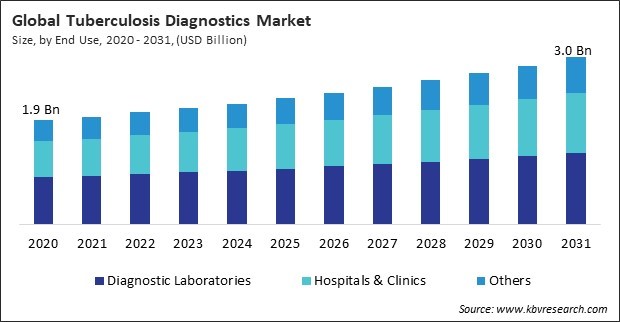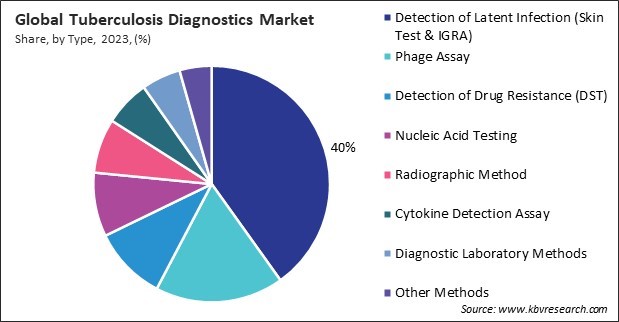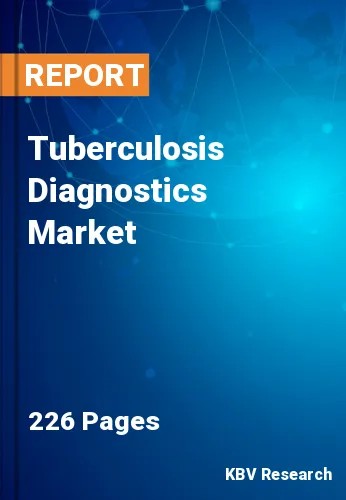“Global Tuberculosis Diagnostics Market to reach a market value of 3.0 Billion by 2031 growing at a CAGR of 4.7%”
The Global Tuberculosis Diagnostics Market size is expected to reach $3 billion by 2031, rising at a market growth of 4.7% CAGR during the forecast period.
Despite having a lower TB incidence than other regions, North America’s market is driven by advanced healthcare systems, high levels of awareness, and strong public health initiatives focused on TB elimination. The U.S., in particular, has made significant investments in TB research and development, leading to the availability of cutting-edge diagnostic technologies. Consequently, the North American region would acquire nearly 30% of the total market share by 2031.

Tuberculosis (TB) continues to be a substantial global health issue, with a particularly high incidence rate in developing countries. The impact of TB is not confined to health alone; it also has significant social and economic consequences. Hence, the rising incidence of TB will increase the demand for diagnostics, thereby propelling the expansion of the market.
Additionally, this field has witnessed significant technological advancements in recent years, which have been crucial in enhancing the accuracy, speed, and accessibility of TB detection. The GeneXpert MTB/RIF assay is one of the most prominent examples of molecular diagnostics transforming TB care. Thus, these factors will aid in the growth of the market.
However, Advanced TB diagnostic tools, particularly those based on molecular diagnostics, are often priced beyond the reach of many healthcare systems in low- and middle-income countries (LMICs). The reliance on donor funding also introduces a level of uncertainty and instability in the financing of TB diagnostics. Hence, the high cost of advanced TB diagnostic tools, coupled with limited and unstable funding, presents significant barriers to the widespread adoption of these technologies.
Moreover, in order to meet the urgent needs of the pandemic, resources such as laboratory facilities, personnel, and financial allocations were redirected from tuberculosis (TB) initiatives. This was done because healthcare systems all over the world were unable to cope with the rise of COVID-19 cases. This diversion of resources led to a significant decline in TB testing and diagnosis, as many TB diagnostic facilities were repurposed for COVID-19 testing. Hence, the pandemic had an overall negative impact on the market.
Based on type, the market is divided into nucleic acid testing, detection of latent infection (skin test & IGRA), detection of drug resistance (DST), phage assay, cytokine detection assay, diagnostic laboratory methods, radiographic method, and others. The phage assay segment procured 18% revenue share in the market in 2023. This method, which utilizes bacteriophages to detect TB bacteria, has gained traction due to its ability to provide quick and reliable results.

On the basis of end use, the market is classified into diagnostic laboratories, hospitals & clinics, and others. The hospitals & clinics segment garnered 35% revenue share in the market in 2023. Hospitals and clinics serve as the first point of contact for many TB patients, making them critical for the initial diagnosis and treatment initiation.
Free Valuable Insights: Global Tuberculosis Diagnostics Market size to reach USD 3.0 Billion by 2031
Region-wise, the market is analyzed across North America, Europe, Asia Pacific, and LAMEA. The Asia Pacific segment procured a 35% revenue share in the market in 2023. The segment's growth is driven by the high burden of tuberculosis in countries such as India, China, and Indonesia. This necessitates the implementation of ubiquitous and continuous TB diagnostics, as these countries are responsible for a substantial proportion of the global TB case count.
| Report Attribute | Details |
|---|---|
| Market size value in 2023 | USD 2.1 Billion |
| Market size forecast in 2031 | USD 3.0 Billion |
| Base Year | 2023 |
| Historical Period | 2020 to 2022 |
| Forecast Period | 2024 to 2031 |
| Revenue Growth Rate | CAGR of 4.7% from 2024 to 2031 |
| Number of Pages | 226 |
| Number of Tables | 310 |
| Report coverage | Market Trends, Revenue Estimation and Forecast, Segmentation Analysis, Regional and Country Breakdown, Porter’s 5 Forces Analysis, Company Profiling, Companies Strategic Developments, SWOT Analysis, Winning Imperatives |
| Segments covered | End Use, Type, Region |
| Country scope |
|
| Companies Included | Abbott Laboratories, Qiagen N.V, Thermo Fisher Scientific Inc., Becton, Dickinson and Company, F. Hoffmann-La Roche Ltd., Hologic, Inc., Danaher Corporation, DiaSorin S.p.A., Bruker Corporation and Revvity, Inc. |
By End Use
By Type
By Geography
The Market size is projected to reach USD 3 billion by 2031.
Increasing incidence of tuberculosis are driving the Market in coming years, however, High cost of advanced diagnostic tools restraints the growth of the Market.
Abbott Laboratories, Qiagen N.V, Thermo Fisher Scientific Inc., Becton, Dickinson and Company, F. Hoffmann-La Roche Ltd., Hologic, Inc., Danaher Corporation, DiaSorin S.p.A., Bruker Corporation and Revvity, Inc.
The expected CAGR of this Market is4.7% from 2024 to 2031.
The Diagnostic Laboratories segment led the Market by End Use in 2023; thereby, achieving a market value of $1.31 billion by 2031.
The North America region dominated the Market by Region in 2023, and would continue to be a dominant market till 2031; thereby, achieving a market value of $885 million by 2031.
Our team of dedicated experts can provide you with attractive expansion opportunities for your business.

 Drivers
Drivers
 Restraints
Restraints
 Opportunities
Opportunities
 Challenges
Challenges
